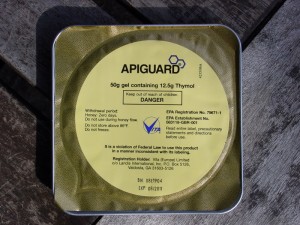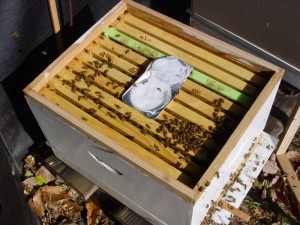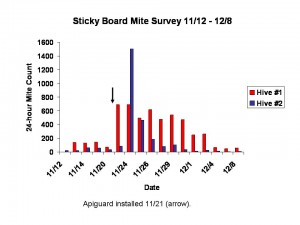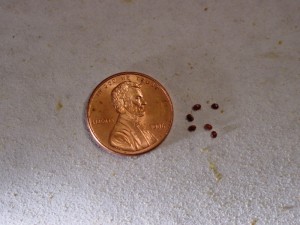How do you kill 10,000 mites living amidst 30,000 bees? There are two general classes of miticides: synthetic (sometimes called “hard” chemicals), and naturally occurring (“soft”) chemicals. “Hard” chemicals are basically variations of pesticides (pyrethroids, organophosphates) used in the agriculture industry to kill ticks on livestock. They can be highly effective, but mites quickly develop resistance to them, and they can accumulate in hive wax, possibly weakening bees over time. “Soft” chemicals are organic acids (formic acid, oxalic acid) or aromatic chemicals derived from the oils of plants. Soft chemicals don’t accumulate in hive wax, and mites don’t seem to be able to develop resistance to these chemicals, but they probably more toxic to bees than the synthetic miticides in the short term. After looking over the choices, I ordered some formic acid from a nearby apiary supply house. Formic acid has been used to kill varroa mites for many years in Europe with reasonable success, and it works well in cool weather – good for me since I was late in battling these beasts. Unfortunately, the product wasn’t available, and they offered me Apiguard instead. Rather than look for another supplier, I accepted their offer.
Apiguard is thymol suspended in an inert gel. Thymol is an aromatic chemical obtained from the thyme plant. It has been used as an antiseptic since the time of the pharaohs (it was one of the ingredients used to prepare mummies). Thymol has a very characteristic odor which you probably know – it is one of the active ingredients in Listerine. Apiguard is fairly easy to apply and relatively nontoxic, but the directions say its effectiveness is reduced when the maximum daytime temperature is less than 60 degrees Fahrenheit. Since this is mid-November, time is of the essence.
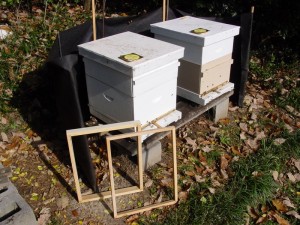
Getting set up for Apiguard treatment. Spacers are inserted over the brood box to give the bees adequate access to the gel container. The bees spread the gel throughout the hive
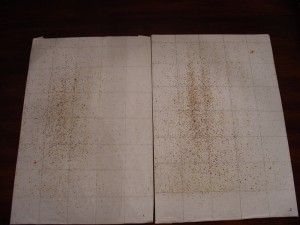
Sticky boards three days after Apiguard installation. The boards are approximately 15 inches wide by 22 inches long.
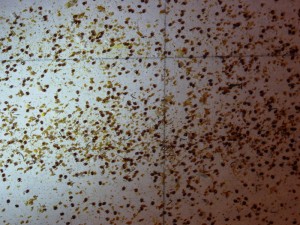
Close-up view of a sticky board three days after Apiguard installation. There were more than 1,000 mites on the board.
There was little doubt that Apiguard was knocking out the mites – here are the mite counts for two weeks after the Apiguard was installed on November 21st.
The manufacturer of Apiguard recommends a second application two weeks after the initial treatment. By the second application (on December 9th), I estimated that almost 6,000 mites had fallen out of hive #1, and 2,700 mites had dropped out of hive #2.
I’ve been asked a couple of questions about varroa mites:
Q: How big are they?
A: About 1.5 by 2 mm. Here’s a picture that gives you an idea of their size.
Q: How did they make it to America?
A: No one knows. Although the mites were thought to originate on the island of Java, more recent evidence suggests the strains in the US probably came from Japan or Korea. They were first recognized in the United States in 1987. As of late 2009, Australia is the only region of the world thought to still be free of the varroa mite.

